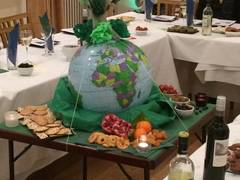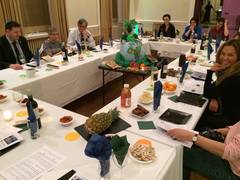

Tu B’Shevat is the New Year of Trees, falling on the 15th day of the month of Shevat. It may seem early to celebrate trees, but the idea is that we mark the very first shoots of spring in Israel, and it’s certainly nice during deepest, darkest midwinter to look forward to more hospitable weather.
What’s the history?
In the days of the temple in Jerusalem, Tu B’Shevat served as the day on which farmers offered the first fruits of the trees they planted, after the trees had turned four years old. The following Tu B’Shevat signified when the farmers were allowed to begin making use of the produce of the trees they planted, whether for personal or economic reasons.
In the middle ages, the Jewish mystics of Tzfat led by Rabbi Isaac Luria developed a ritual meal celebrated on Tu B’Shevat that was modelled on the Passover Seder. Four cups of wine were drunk and seven "fruits" symbolic of those of the Holy Land were eaten. With the rise of Zionism in the late 19th century, Tu B’Shevat was rediscovered as a celebration that links the Jews with their land. The holiday became one of rededication to the ecology of the land, with the planting of trees becoming a key element of the festival. Jews outside of Israel contribute money to plant trees there and/or plant trees in their own communities as we have done at Westminster.
With the increased concern for the environment in recent years, Tu B’Shevat has taken on an additional meaning as a day on which Jews can think about ecology and the environment. This has led to the Tu B’Shevat Seder being rediscovered and regaining popularity.
How do we celebrate at Westminster Synagogue?
For our adult members, we usually hold a Tu B’Shevat Seder, often as part of our Or Chadash course. If you’ve never experienced one of these then it’s definitely the opportunity to do so, as we taste the 7 species of fruit indigenous to Israel, drink 4 cups of wine, sing and learn an Israeli dance.
